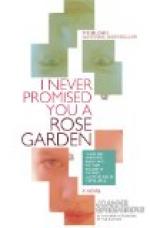In spite of a certain sense of annoyance that I felt at the way in which Maria was giving me a lecture, and somehow when a person has taught for ten years she (particularly she) inevitably acquires a rather unpleasant way of imparting the truth that makes one wish to deny it, I stood convicted in my own eyes as well as in Maria’s. It had so often happened that when either Barney had brought in the sweet peas and left them on the porch table, or Bart had gathered a particularly beautiful wild bouquet in one of his tramps, I had lingered over a book or some bit of work upstairs until almost the time for the next meal, and then, seeing the half-withered look of reproach that flowers wear when they have been long out of water, I have jammed them helter-skelter into the first receptacle at hand.
Sometimes a little rough verbal handling stirs up the blood under a too-complacent cuticle. Maria’s preachment did me good, the more probably because the time was ripe for it, and therefore the past two weeks have been filled with new pleasures, for another thing that the month spent in the open has shown me is the wonderful setting the natural environment and foliage gives to a flower. At first the completeness appeals insensibly, and unless one is of the temperament that seeks the cause behind the effect, it might never be realized.
The Japanese have long since arrived at a method of arranging flowers which is quality and intrinsic value as opposed to miscellaneous quantity. The way of nature, however, it seems to me, is twofold, for there are flowers that depend for beauty, and this with nature that seems only another word for perpetuity, upon the strength of numbers, as well as those that make a more individual appeal. The composite flowers—daisies, asters, goldenrod—belong to the class that take naturally to massing, while the blue flag, meadow and wood lilies, together with the spiked orchises, are typical of the second.
By the same process of comparison I have decided that jars and vases having floral decorations themselves are wholly unsuitable for holding flowers. They should be cherished as bric-a-brac, when they are worthy specimens of the art of potter and painter, but as receptacles for flowers they have no use beyond holding sprays of beautiful foliage or silver-green masses of ferns.
Porcelain, plain in tint and of carefully chosen colours, such as beef-blood, the old rose, and peach-blow hues, in which so many simple forms and inexpensive bits of Japanese pottery may be bought, a peculiar creamy yellow, a dull green, gobelin, and Delft blue and white, sacred to the jugs and bowls of our grandmothers, all do well. Cut glass is a fine setting for flowers of strong colour, but kills the paler hues, and above and beyond all is the dark moss-green glass of substantial texture that is fashioned in an endless variety of shapes. By chance, gift, and purchase we have gathered about a dozen pieces of this, ranging from a cylinder almost the size of an umbrella-stand down through fluted, hat-shaped dishes, for roses or sweet peas, to some little troughs of conventional shapes in which pansies or other short-stemmed flowers may be arranged so as to give the look of an old-fashioned parterre to the dining table.




